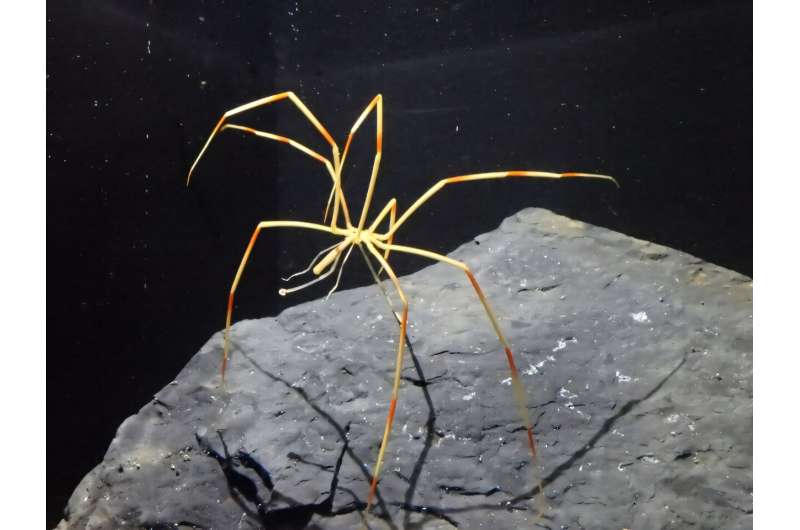
Research at Northeastern University is shedding light on how Antarctic sea spiders adapt to extreme cold and the potential effects of climate change on their survival. This study, led by Connie Phong, an assistant teaching professor, aims to understand how these unique marine arthropods cope with temperatures just below freezing and what might happen as ocean temperatures rise.
Antarctic sea spiders, which can grow legs as long as a small cat, exhibit remarkable adaptations to their frigid environment. Phong’s research focuses on the organisms’ gut microbiomes as a means of understanding their life cycle and responses to slightly warmer conditions. “The first question is, how does life even survive at these very cold temperatures?” Phong states. “And then, what happens when it starts to get very warm?”
Through her work, Phong is investigating the impact of even minor temperature increases, as animals accustomed to stable environments often struggle with even slight changes. By studying organisms that live at the extremes, researchers gain valuable insights into the biodiversity that could be lost as climate change progresses.
This summer, as part of her undergraduate biology course, Phong collaborated with students to examine microbes found in the sea spiders’ unique anatomy. The spiders, collected from waters surrounding McMurdo Station, a U.S. Antarctic Program facility, offer a rare opportunity to study life that has adapted to some of the harshest conditions on Earth.
One of the most striking findings in Phong’s research is the slow developmental process of sea spiders. For instance, while a fertilized frog egg divides within an hour and a half, Antarctic sea spider eggs take around eight months for their first cell division. “When you go so slow, at some point you can get stuck,” she explains. “But life finds a way to keep on moving even in slow times.”
The research team faced challenges in extracting valuable data from their specimens, as the spiders’ legs house their digestive systems. Phong noted that she had only limited specimens to work with, often just two or three legs from different species. Students meticulously separated the exoskeleton from the gut contents to avoid contaminating samples.
Sophomore biology major Alexandra Barnes described the gut contents as resembling “the inside of a banana peel.” The team employed advanced techniques to process the DNA, including cloning and applying electric currents to create fragments for analysis. They successfully isolated “cold shock proteins,” which help the spiders thrive in cold environments.
Junior biology and political science major Mariella Fayad emphasized the importance of sequencing the samples to distinguish between cold shock proteins in Antarctic sea spiders and those in other animals. The findings could provide insight into how these unique creatures are adapting to warming waters.
Despite the logistical difficulties of studying organisms living in freezing conditions, Phong expressed pride in her students’ achievements. “I’m proud of the work that they were able to do,” she remarked. “It is really novel research.”
Looking ahead, Phong plans to present her research at the Scientific Committee on Antarctic Research meeting in Oslo in 2026, where she hopes to include Barnes and Fayad in the discussion of their findings. “This is research that I will continue to work on, but I’m really glad to be able to use it to teach students,” Phong added.
The ongoing study of Antarctic sea spiders not only contributes to scientific understanding of extreme life forms but also highlights the broader implications of climate change on marine biodiversity. As researchers like Phong continue to explore these adaptations, they provide critical insights into the resilience and challenges faced by life at the planet’s edges.






